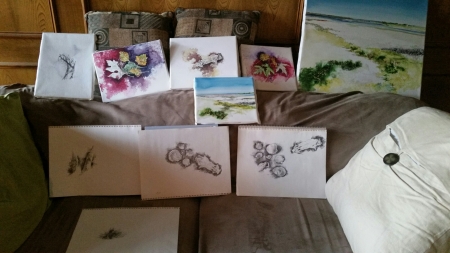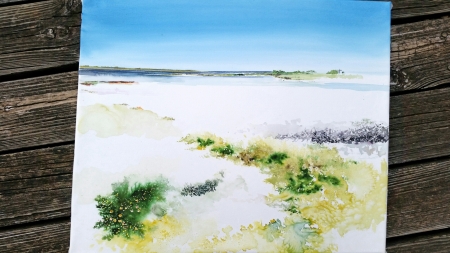 To fend off the crowd, Stoics believed, it was essential to cultivate inner self-sufficiency, and Seneca returns to this notion over and over. Learn to be content within yourself, to trust your own instincts and ideas. Those who achieve this autonomy, he argues, are best able to enjoy and make the most of their outward lives. They thrive in the crowd because they’re not dependent on it.
To fend off the crowd, Stoics believed, it was essential to cultivate inner self-sufficiency, and Seneca returns to this notion over and over. Learn to be content within yourself, to trust your own instincts and ideas. Those who achieve this autonomy, he argues, are best able to enjoy and make the most of their outward lives. They thrive in the crowd because they’re not dependent on it.
William Powers, Hamlet’s Blackberry
Within you, there is a stillness and a sanctuary to which you can retreat at anytime and be yourself.
Hermann Hesse, Siddhartha
The photo above was taken early Saturday morning in the back of my darkened classroom, and it became a sacred space for me. Nearly three months of summer solitude and quiet are about to end as I enter the public classroom arena in the morning and write the first page of a new chapter for all of us. I’m choosing the title above because I have torn off and discarded a number of teaching points I have grown to love over the years, replacing them with some new ones.
This latest book I’m reading Hamlet’s Blackberry: Building a Good Life in the Digital Age has seized my attention and held it like no other in recent years. Not only am I appreciative that the author got my attention of how social media can drive one’s personal agenda, I am glad now to seek a more satisfying lifestyle that balances my quiet solitude with the demands of a social business schedule. The summer has furnished an excellent training ground for the quiet side of my life, and tomorrow I’ll find out just how successful I am at balancing the tumult of daily school with the quiet of my study. I find such attractive sweetness in the lives of Emerson, Thoreau, Annie Dillard and Aldo Leopold because I imagine them to have found ways to balance their quiet inwardness with the demands of business. I see them as very positive role models for anyone who wishes to pursue creative exploits.

I did fight for some painting time in the studio this day before school begins. Here is a 20 x 24″ beginning of the same Laguna Madre painting that I completed a couple of days ago. I want to explore the serpentine countour of land in the foreground as I did in that very small watercolor.

Sketchbook/Journal Experimenting
This morning, while reading something completely unrelated, my mind drifted to drawing, and I’m glad I closed the book and let the imagination run. This is not something I’ve been taught or read in any art manual–I have always balked at drawing landscapes in pencil, because I could not solve the problem of lightly colored grasses against darker backgrounds. I had solved that issue in watercolor through masquing, but could not think of a way to render light grass blades against darker ones in pencil. Recalling that I could impress shapes into paper with a hard pencil (6H or 8H) and then skate over it with a soft lead pencil, I wondered if I could take a ballpoint pen that had run dry, and use it to press lines of grass into the paper, and then drag a soft pencil over the top of it. The sketchbook/journal page above shows my first attempts. Turning to another sketchbook, I then worked more deliberately and got closer to where I want to go:

Combining stylus indentions with soft graphite drawing
To get this effect, I used an empty ballpoint pen for the impressions into the paper, then skated over it with a 6B pencil and rubbed some of it out with a paper blending stump. Finally, I drew in darker grasses, first in 6B, followed by a #2 pencil and then finally a 6H. I’m getting closer to what I want to accomplish. Too bad I have to break this off and return my attention to tomorrow’s first day of classes.
Thanks for reading.
I make art in order to learn.
I journal when I feel alone.
I blog to remind myself that I am not alone.
















